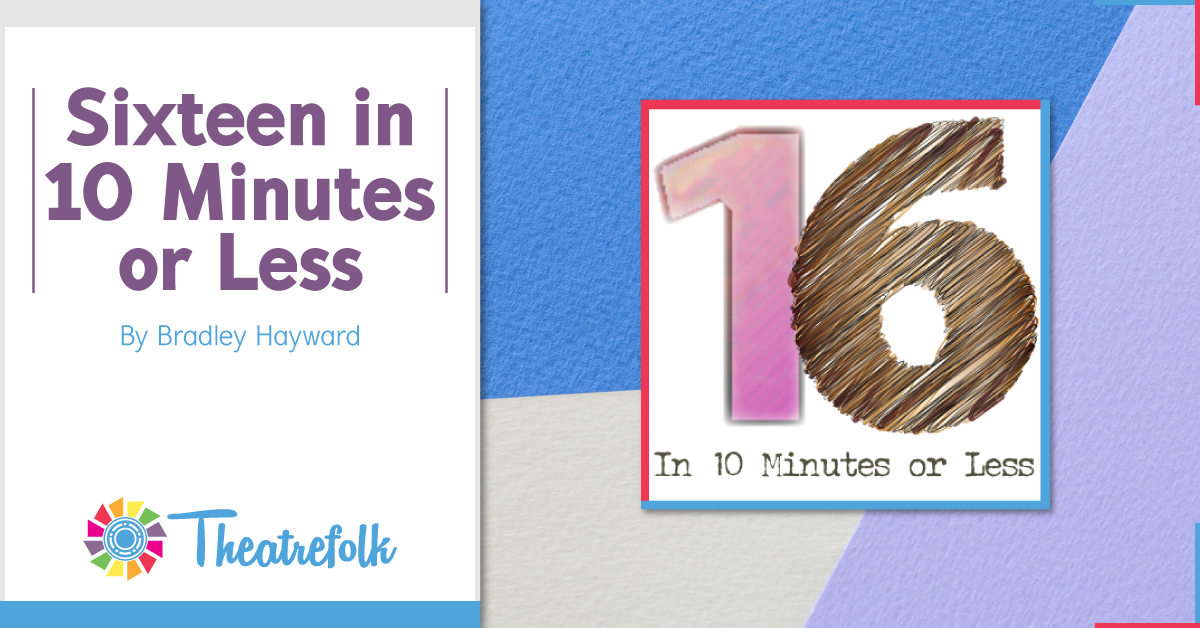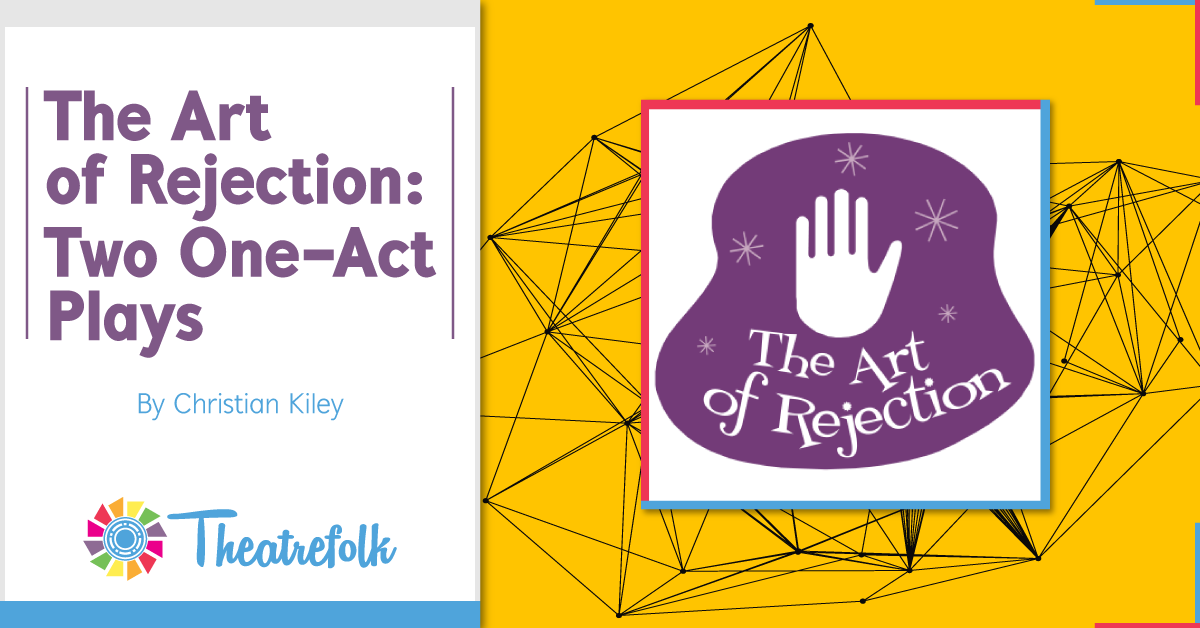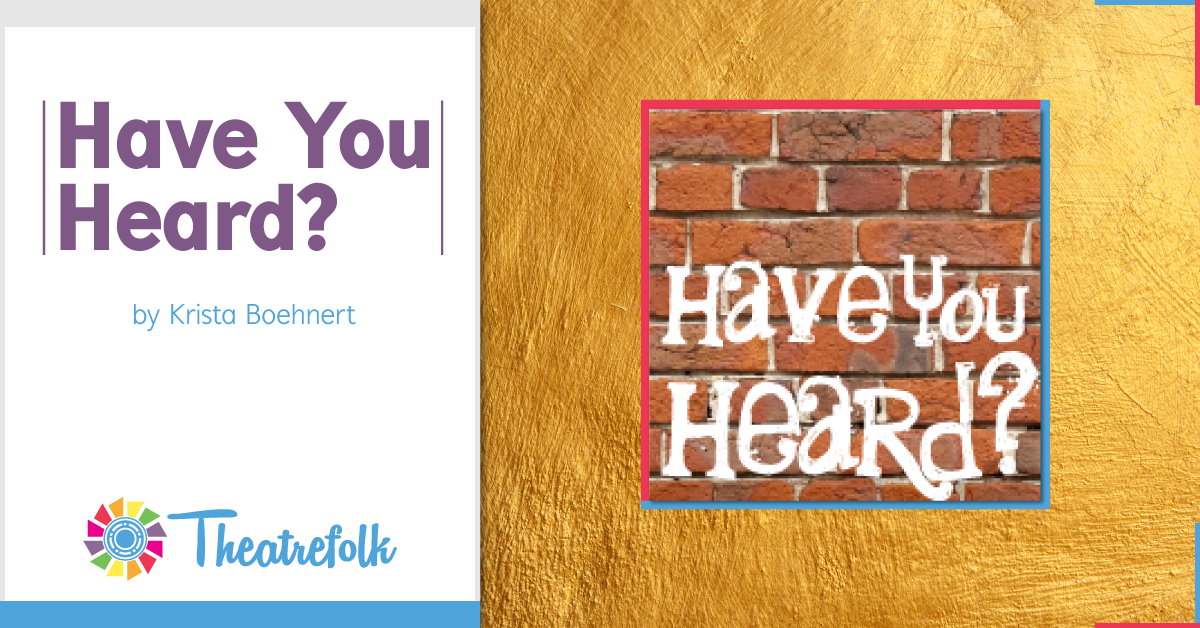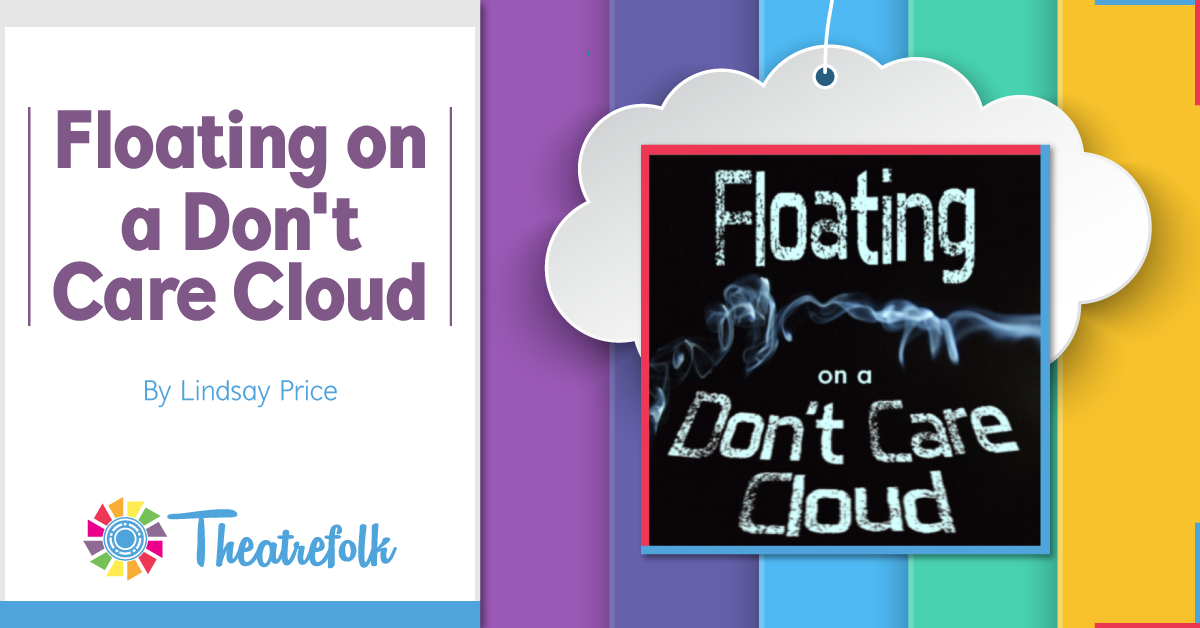
Theatrefolk Featured Play – Sixteen in 10 Minutes or Less by Bradley Hayward
Welcome to our Featured Play Spotlight. Being sixteen isn’t easy. Choosing a play collection that illustrates the ups and downs of being sixteen is. Sixteen in 10 Minutes or Less by Bradley Hayward is a collection of plays that can be performed as a full-length evening of entertainment, or as one or more stand-alone plays that stand perfectly well on their own.
The lives of seven teenagers become intertwined in this humorous and oftentimes bittersweet collection of ten minute plays. From extracting a gummy bear out of a new set of braces to coping with bullies, these characters share their innermost hopes and fears with each other, ten minutes at a time. As the audience drops in on these intimate moments, they will come to understand that being sixteen isn’t always easy.
Why did we publish this play?
We adore a flexible play here at Theatrefolk. This play is a suite of 10 minute plays on what it’s like to be 16 that can be done individually or all together for a full evening of theatre. We also adore well written three dimensional characters which Bradley Hayward is exceptional at creating. It’s so easy to short change or stereotype teen characters. Bradley offers a wealth of multi-faceted personalities who face the sweet and bittersweet of teen life.
Let’s hear from the author!
1. Why did you write this play?
I wanted to write a character driven full length piece that would be accessible to a wide variety of performing groups. So I devised the idea of short plays that would work well independently, but also overlap enough to create a moving piece of theatre as a whole.
2. Describe the theme in one or two sentences.
Each of the plays has its own individual theme, but the overall theme is how sixteen year olds maneuver the challenges of making human connections while still in the process of discovering their own identities.
3. What’s the most important visual for you in this play?
In the first scene, Friend Request, the characters are all communicating through Facebook messages in a very static way. The dialogue is performed straight to the audience and none of the actors physically interact. But then in the final scene, Status Update: A Symphony, the actors are working together to create a fluid piece. The dialogue overlaps, the characters make eye contact, and the final image of the play is when all of the characters physically connect by holding hands. This visual gives me chills every time because it shows the overall theme of making connections and how that affects self identification.
4. If you could give one piece of advice for those producing the play, what would it be?
I highly recommend that actors sit in on rehearsals of the scenes they are not in at least once. Almost all of the characters are referenced in each of the individual plays, so hearing what perspective the other characters have of yours will help inform how you play the role.
5. Why is this play great for student performers?
First and foremost, this play is about allowing student actors to dig deep into the characters they are playing. Each character has a back story that is only hinted at, so it is up to the actors to discover and even create their own histories in order to enrich their performances. And because the play is broken up into a series of short plays, rehearsals are easier to schedule, which allows for more in-depth scene study.
6. Do you have any tips or suggestions for those who are performing this play online?
The plays would be perfect for online performances because they are all about teenagers talking to each other, and quarantine has forced us all to communicate via services like Zoom and Facetime, so young actors should be very comfortable with this already. Also, the plays Friend Request and Status Update: A Symphony are already written as online dialogues, so those plays in particular seem like they were tailor made to be virtually produced!


